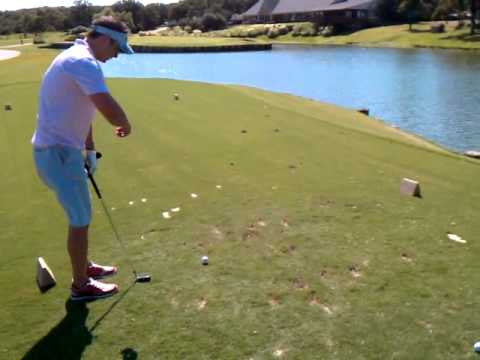It is estimated that each year about 40,000 people are admitted to the ER following a golf injury. A flying club head, a stray golf ball or a seemingly harmless golf cart often becomes the reason why so many accidents and injuries happen at a golf course. Unfortunately, the situation doesn’t change much with place. Whether you are in a city golf course in Texas or one in California, you should be prepared to deal with the injuries. The good news is, most of these injuries can be treated or prevented. Read on to learn more about some of the common golf injuries.
Tendinitis
Tendinitis is one of the most common injuries suffered by golfers, affecting their elbows. You’ll experience inflammation and irritation in your tendon tissue. This condition is also called ‘tennis elbow’ if you have an outer tendon injury. Again, if you have sustained an injury in your inner tendon, it is known as ‘golfer’s elbow’. Senior golfers are more susceptible to this condition and so are the players who need to make repetitive movements, like hitting a golf ball. Tendinitis is aggravated if you make inappropriate swing movements.
Tendinitis can be treated by resting your affected tendon. It will help the injured area to heal, lessen inflammation, improve swing motions and boost muscle strength.
Backache
Based on an estimate, 75-85 percent of US citizens will experience some kind of back pain some time or the other in their lives. The number may be much higher when it comes to golfers. What causes backache? Rotating the golf swings exert a lot of pressure on a player’s muscles and spine. As far as golfers are concerned, they are required to spend 4-5 hours in a bent-over posture. And, they need to repeat the same movement several times a day. Minor strains on the back may lead to major injuries, if neglected.
To prevent backache and injuries, indulge in exercises that strengthen and stretch your back. For best results, do some stretching exercises before a round of golf. Train yourself to master swing techniques and avoid placing your feet wide apart.
Wrist Injuries
The high pace of typical golf swings and the repetitive nature of the game often make golfers vulnerable to wrist injuries. The common symptoms are pain or a feeling of tenderness on the top of your wrist. These symptoms are generally experienced at impact or at the top of your backswing.
Most of the wrist injuries can be easily prevented by participating in pre-season or year-round golf conditioning programs. Wrist injuries can also be prevented by releasing the pressure when you grip the club.
Rotator Cuff
Do you experience pain in your upper arm or shoulder when swinging a club, and even after a round of the game? Do you also feel an excruciating pain when trying to extend your arms overhead or at night? If so, you are suffering from rotator cuff which is caused due to improper golf swings, taking a deep divot, or hitting a rock or root. You can even develop bursitis, tendinitis or tears in your rotator cuff because of the repetitive nature of the swings.
This condition can be treated with the help of anti-inflammatory medications. In some cases, a golfer may have to go through a surgical repair. You can allay the pain or prevent more injuries by making changes in the golf swings coupled with strength conditioning.
Golf injuries are common anywhere you go, and it hardly matters if you are in New York or Texas. City golf courses, luckily, have specific conditioning programs to avoid or treat injuries. Make the most of them and work towards improving your swing techniques. Use proper golf equipment and avoid extended practice sessions to play safe on the course.

